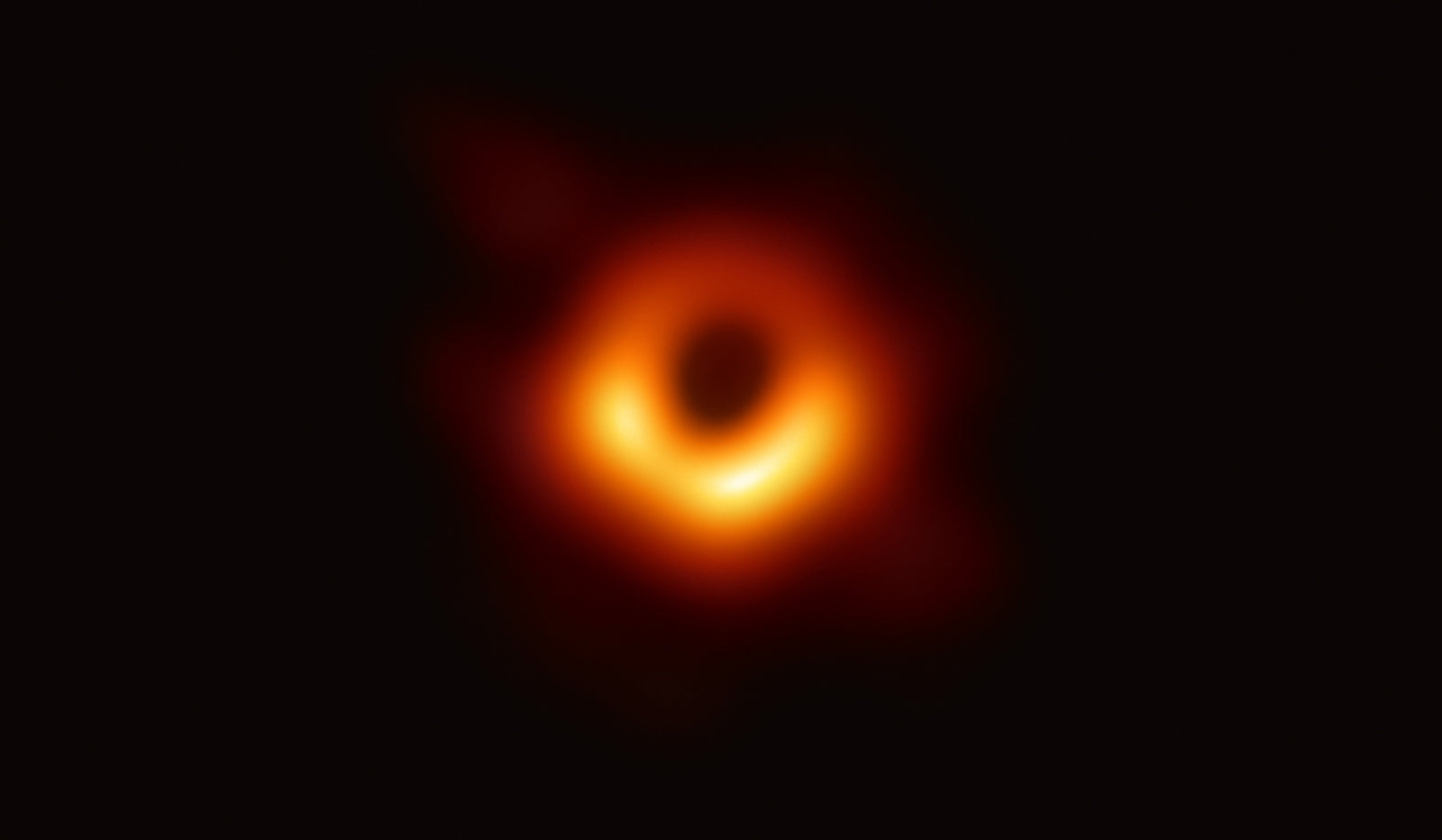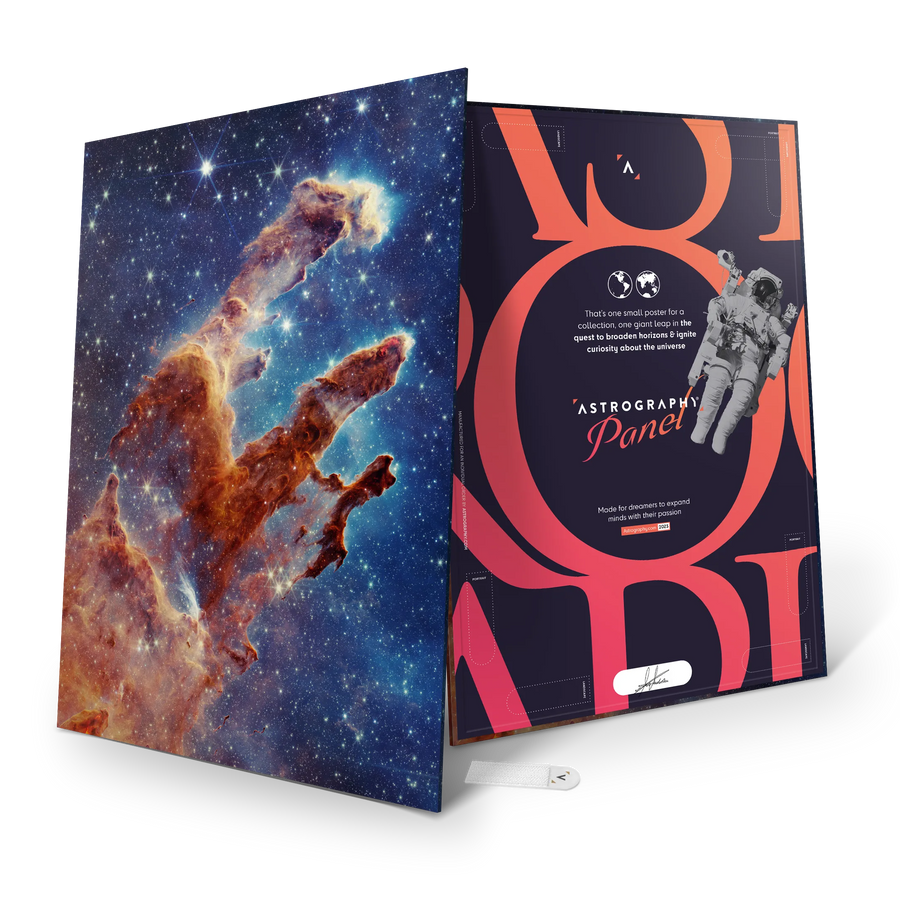Stunning history behind the Black Hole image

Readers of The Royal Society volume published in the year 1784 couldn’t be more surprised. A renowned natural philosopher, John Mitchell, has written a letter to Henry Cavendish, another important scientific figure of that time, outlining the existence of “Dark Stars”.
Long before Einstein’s relativity theory, Mitchell proposed the concept of a star so massive that its escape velocity exceeds the speed of light, making the object dark. The gravitationally trapped light would be unable to escape the object, making it dark - a star that is dark.
The calculations were obviously wrong, but the intuition was right. There are indeed objects so massive that light cannot escape - black holes.
What is a Black Hole?
Black holes themselves are regions of the universe with gravity so strong that nothing currently known to mankind, be that light, electromagnetic waves, or any other type of energy, can escape it.
The only exception is Hawking Radiation, yet its temperature is inversely proportional to the black hole’s mass, making it essentially impossible to observe when it comes to objects with stellar or bigger mass.
Capturing the image of a Black Hole
So there is an object that emits no light, no radio waves, and Hawking radiation may be a billionth of Kelvin. Yet being invisible is not the same as indetectable. These objects heavily (pun intended) influence their surroundings.
- Accretion disk - the extreme gravity of a Black Hole attracts matter around it - gas, interstellar matter, rocks, planets, and sometimes other stars. The matter falling onto the black hole creates an accretion disk, where, heated by friction to the point of shining far brighter than a typical star.
- Binary system - some stars are entrapped in a binary system with a black hole, not another star.
- Galaxy core - astronomical observations show that nearly every galaxy has a supermassive black hole at its center. Sagittarius A*, a supermassive Black Hole at the center of the Milky Way Galaxy, can be detected with active radio emissions from its accretion disk.
- Jets - massive objects like black holes, neutron stars, and pulsars tend to emit a shot of ionized matter along their axis of rotation, sometimes extending for thousands of light-years in length. Jets are shiny and relatively easy to observe.
So basically, astronomers can detect a black hole by carefully observing what’s around it and pointing out the black space in between with a victorious “here it is!”.
Black Hole images we have
With powerful telescopes and detection instruments, we have some images of a Black Hole. Yet astronomy itself has exceeded the barrier of visibility long ago, tending to create images from math and more elusive sources like X-ray imaging and radio imaging.
Jean-Pierre Luminet: the first image of a Black Hole
In 1979, the then-young astronomer Jean-Pierre Luminet published a vision of the black hole he produced using simulations run on punch-card computers, and ink.
The illustration was accurate enough to show elements like the "shadow" of a black hole (dark area in the center) and different brightness levels of parts of the accretion disk.

Luminet’s vision appeared to be not only scientifically accurate but also captivating. Luminet himself is not only an astronomer but also an artist, sculptor, and musician.
Published in 1979 by Astronomy and Astrophysics, this work captivated the world by presenting not just an artistic interpretation, but a scientifically grounded image of a black hole—based on its theorized properties and Einstein's relativity. This pivotal depiction brought the mysterious cosmic phenomena into a new light.
The first real image of a Black Hole
There is an astronomer-artist's vision of a black hole, an old black hole in the galaxy's center, and impressive jets. But what about the black hole itself?
We had to wait until 2019 for the first image of a black hole taken by astronomers. It was in April this year that scientists announced that the first image of a black hole had been taken with Earth-sized The Event Horizon Telescope (EHT).
(You can find out more about the entire project in a series of six papers in a special issue of The Astrophysical Journal Letters – links in the end of article)

What is the Event Horizon Telescope?
The Event Horizon Telescope is a project that spans the whole world, with over 200 scientists working for about two decades. The goal of the project was to capture the event horizon itself - the barrier between the singularity and the rest of the universe, beyond which there is no return.
Capturing something that elusive required linking radio telescopes in Arizona, Spain, Mexico, and Antarctica to form an Earth-sized observational instrument.
But here it is, the image of an event horizon - or rather a "shadow" of a black hole in the center of a super-shiny accretion disk, as predicted by Jean-Pierre Luminet.
Currently, there are two real images of supermassive black holes from the center of galaxies - one depicts Sagittarius A* and the second one Messier 87.


James Webb Telescope images of black hole
Another powerful instrument, that allows astronomers to peer into the distant past of the universe, with all its beauty and diversity of objects is the James Webb Telescope.
In July 2023, researchers unearthed a supermassive black hole in the center of the CEERS 1019 galaxy, using the James Webb Space Telescope.
"Today," the universe is approximately 13.82 billion years old. The black hole observed by JWST existed just over 570 million years after the Big Bang, making the galaxy and the black hole extremely early objects on the universe's time scale.

This infographic graphic highlights the discovery of the universe's farthest known active supermassive black holes, pinpointed by an array of both terrestrial and space-based telescopes. Among these groundbreaking findings, three have been recently brought to light by the James Webb Space Telescope's Cosmic Evolution Early Release Science (CEERS) Survey.

Read more:
James Webb Space Telescope uncovers young stars in NGC 346’s dusty ribbons
Enceladus holds potential for alien life with recent discovery of vital element
Anticipating the celestial show – Betelgeuse's potential supernova event
Supernova 2020eyj: First radio signal from the massive explosion of a dying white dwarf
Spotting the Jet - NASA images of black hole
As mentioned above, massive objects like black holes create jets - massive amounts of particles traveling near the speed of light, shot near the poles of rotation. Jets themselves are bright and visible, possible to observe in the visible light spectrum.
NASA owns several interesting images of jets shot by black holes, including the Messier 87 black hole Jet image captured by the Hubble Telescope. So basically if you want some images of a black hole from the Hubble Telescope - it is possible, but not directly.
Check also:
Summary
Ironically, the objects that emit nearly nothing are relatively easy to spot, being surrounded by bright, luminous, and eye-catching phenomena like jets of accretion disks.
NASA offers multiple black hole free images, as well as black hole HD images. Also, if you want to stare into the nothingness without engaging supercomputers and Earth-sized telescopic systems, you can always have a black hole poster on your wall!
Check out Black Hole posters
References
- Astronomers Capture First Image of a Black Hole, The Event Horizon Telescope, [8.04.2024]
- Astronomers Reveal First Image of the Black Hole at the Heart of Our Galaxy, The Event Horizon Telescope, [8.04.2024]
- Black Hole Desktop & Phone Wallpapers, NASA, [08.04.2024]
- Dark Star (Newtonian mechanics), Wikipedia, [8.04.2024]
- First ever image of a black hole: a CNRS researcher had simulated it as early as 1979, CNRS, [8.04.2024]
- Lutz, O., How Scientists Captured the First Image of a Black Hole, JPL NASA, [8.04.2024]
- The Event Horizon Telescope Collaboration et al, First M87 Event Horizon Telescope Results. I. The Shadow of the Supermassive Black Hole, The Astrophysical Journal Letters, Volume 875, Number 1, doi: 10.3847/2041-8213/ab0ec7, [8.04.2024]
- The Event Horizon Telescope Collaboration et al, First M87 Event Horizon Telescope Results. II. Array and Instrumentation, doi: 10.3847/2041-8213/ab0c96, [8.04.2024]
- The Event Horizon Telescope Collaboration et al, First M87 Event Horizon Telescope Results. III. Data Processing and Calibration, The Astrophysical Journal Letters, Volume 875, Number 1, doi: 10.3847/2041-8213/ab0c57, [8.04.2024]
- The Event Horizon Telescope Collaboration et al, First M87 Event Horizon Telescope Results. IV. Imaging the Central Supermassive Black Hole, The Astrophysical Journal Letters, Volume 875, Number 1, doi: 10.3847/2041-8213/ab0e85, [8.04.2024]
- The Event Horizon Telescope Collaboration et al, First M87 Event Horizon Telescope Results. V. Physical Origin of the Asymmetric Ring, The Astrophysical Journal Letters, Volume 875, Number 1, doi: 10.3847/2041-8213/ab0f43, [8.04.2024]
- The Event Horizon Telescope Collaboration et al, First M87 Event Horizon Telescope Results. VI. The Shadow and Mass of the Central Black Hole, The Astrophysical Journal Letters, Volume 875, Number 1, doi: 10.3847/2041-8213/ab1141, [8.04.2024]
- Webb Detects Most Distant Active Supermassive Black Hole to Date, NASA, [8.04.2024]
- Wall M., Eureka! Scientists Photograph a Black Hole for the 1st Time, Space.com, [8.04.2024]



